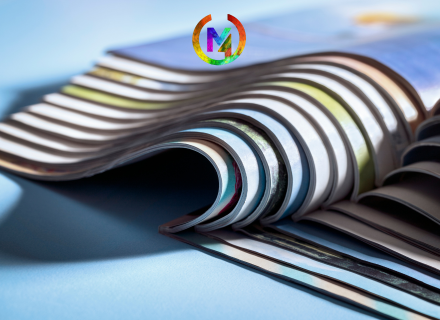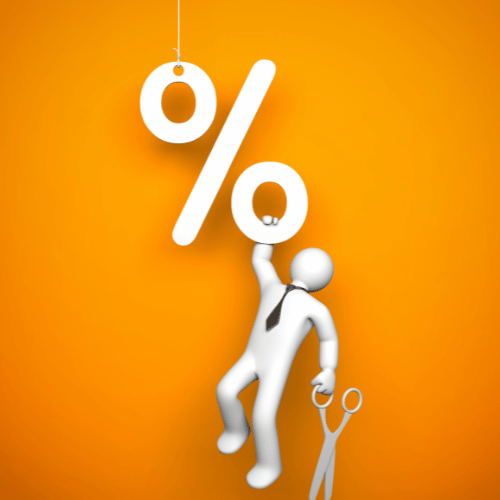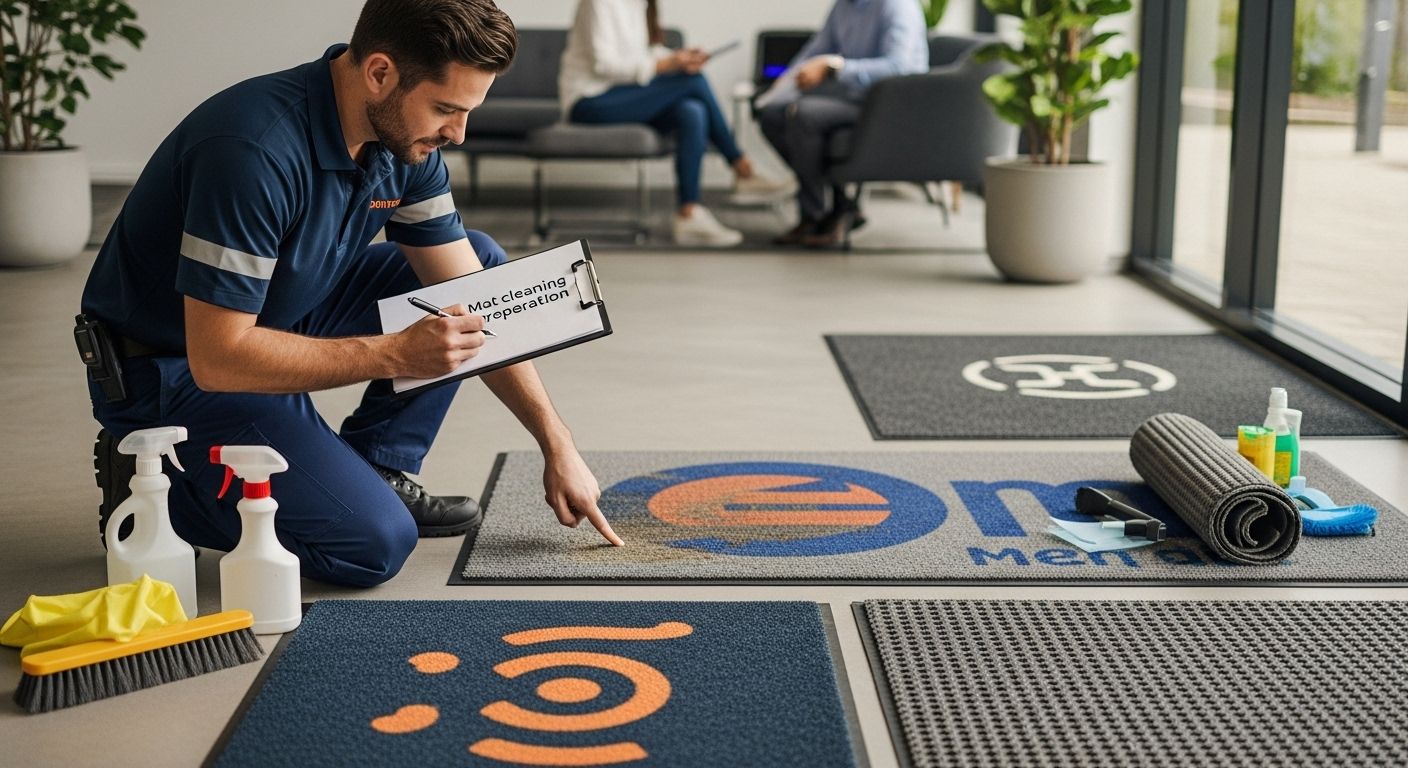
Commercial mats are everywhere and they quietly catch thousands of steps each day. Yet a poorly maintained mat can increase accident risk by over 60 percent according to the Health and Safety Executive. People often worry about cleaning techniques or the right equipment but the most overlooked step is a thorough mat assessment before any scrubbing starts and it is this assessment that can make or break your entire cleaning strategy.
Table of Contents
- Step 1: Assess Your Mat Types And Cleaning Needs
- Step 2: Gather Necessary Cleaning Supplies And Equipment
- Step 3: Prepare The Area For Cleaning Mats Effectively
- Step 4: Execute The Cleaning Process Strategically
- Step 5: Inspect Mats For Quality And Maintenance Needs
- Step 6: Implement A Regular Cleaning Schedule
Quick Summary
| Key Point | Explanation |
|---|---|
| 1. Conduct a thorough mat assessment | Evaluate mat types, materials, and conditions to tailor cleaning approaches effectively. |
| 2. Gather appropriate cleaning supplies | Use specialized cleaning agents and industry-grade tools suited for each mat type to enhance cleaning efficiency. |
| 3. Prepare the cleaning area properly | Clear the workspace and ensure safety measures are in place to facilitate uninterrupted cleaning. |
| 4. Implement systematic cleaning techniques | Follow a structured cleaning method, addressing loose debris first, then using appropriate wet cleaning practices. |
| 5. Establish a regular cleaning schedule | Set a cleaning timetable based on traffic patterns to ensure consistent mat performance and safety standards. |
Step 1: Assess Your Mat Types and Cleaning Needs
Successful commercial mat cleaning begins with a meticulous assessment of your specific mat types and unique cleaning requirements. Different environments demand tailored approaches, making a comprehensive initial evaluation crucial for maintaining pristine and functional floor coverings.
Start by conducting a thorough inventory of your commercial mats, examining their material composition, usage frequency, and exposure conditions. Entrance mats, logo mats, and industrial floor coverings each present distinct cleaning challenges. Rubber mats in manufacturing settings will require dramatically different maintenance compared to reception area logo mats. Consider factors like foot traffic volume, potential contaminant exposure, and the specific industry environment where the mat is situated.
Your assessment should include detailed documentation of each mat’s characteristics. Measure the mat dimensions, identify its primary material composition (such as nylon, polypropylene, or coir), and record its current condition. Pay special attention to areas of heavy wear, potential damage, or accumulated grime. Learn more about identifying mat wear patterns to understand when professional intervention becomes necessary.
The Health and Safety Executive emphasizes the critical nature of proper mat maintenance in preventing workplace accidents. Your evaluation should incorporate safety considerations alongside cleaning strategies. Note potential slip risks, areas of moisture accumulation, and any signs of material degradation that could compromise the mat’s protective function.
Key verification criteria for a successful mat assessment include:
- Comprehensive inventory of all mat types and locations
- Detailed documentation of material composition and current condition
- Identification of specific cleaning requirements for each mat type
- Assessment of potential safety risks and maintenance needs
By systematically approaching your mat cleaning preparation, you establish a solid foundation for maintaining clean, safe, and professional commercial environments.
Below is a checklist table to help you verify whether you have thoroughly completed all essential stages of commercial mat assessment, as outlined in the article.
| Verification Task | Description | Completed (✔/✘) |
|---|---|---|
| Inventory Recorded | Document all mat types and locations within premises | |
| Material Composition Noted | Record primary material for each mat (e.g., nylon, rubber, coir) | |
| Condition Inspected | Check for wear, damage, and heavy grime on each mat | |
| Cleaning Needs Identified | Assess cleaning requirements per mat based on usage and environment | |
| Safety Risks Assessed | Identify moisture, slip risks, or material degradation | |
| Measurement Taken | Measure mat dimensions for documentation | |
| Documentation Completed | Maintain clear, accessible records for all of the above |
Step 2: Gather Necessary Cleaning Supplies and Equipment
Preparing for efficient commercial mat cleaning requires strategic selection of supplies and equipment tailored to your specific mat types and cleaning requirements. This crucial step transforms your cleaning approach from basic maintenance to professional-grade restoration.
Professional cleaning demands precision equipment and specialized supplies. Begin by selecting cleaning agents specifically formulated for different mat materials. Commercial rubber mats require robust chemical solutions that eliminate tough industrial grime, while delicate logo mats need gentler cleaning agents that preserve their intricate designs and colours. Industrial-strength detergents with grease-cutting properties work exceptionally well for mats exposed to heavy machinery or manufacturing environments.
Your equipment arsenal should include industrial vacuum cleaners with powerful suction capabilities, extractors designed for deep cleaning, microfibre mops, specialised brushes with varying bristle strengths, and professional-grade steam cleaners. Explore our comprehensive guide on understanding mat maintenance to ensure you select the most appropriate tools for your specific mat types.
According to the Health and Safety Executive, proper cleaning equipment is fundamental in maintaining workplace safety standards. Invest in high-quality protective gear including chemical-resistant gloves, safety goggles, and non-slip footwear to protect yourself during the cleaning process.
Essential supplies for comprehensive mat cleaning include:
- Specialised cleaning solutions matched to mat materials
- Industrial vacuum with multiple attachments
- Professional steam cleaner
- Microfibre cleaning cloths and mops
- Protective personal equipment
- Stain removal treatments
- Deodorising agents
Verify your cleaning readiness by conducting a thorough inventory check, ensuring all equipment is functional, cleaning solutions are within their expiration date, and protective gear is available. A well-prepared cleaning station dramatically improves efficiency and results, transforming mat maintenance from a mundane task to a professional operation.
The following table summarises essential cleaning supplies and equipment for commercial mat maintenance, including their purposes. Use this as a quick reference when gathering materials before starting the cleaning process.
| Supply/Equipment | Purpose |
|---|---|
| Specialised cleaning solutions | Matched to material type to ensure safe and effective cleaning |
| Industrial vacuum cleaner | Removes loose debris and particulate matter |
| Professional steam cleaner | Deep cleaning and sanitising mats |
| Microfibre cloths/mops | Traps dirt efficiently, reduces streaks and residues |
| Protective personal equipment | Safeguards cleaner (gloves, goggles, non-slip shoes) |
| Stain removal treatments | Targets stubborn stains or embedded grime |
| Deodorising agents | Eliminates lingering odours for fresher mats |
Step 3: Prepare the Area for Cleaning Mats Effectively
Preparing the area for commercial mat cleaning is a critical step that ensures safety, efficiency, and optimal cleaning results. This preparatory phase sets the foundation for a thorough and professional cleaning process, minimizing potential disruptions to your business operations.
Clear communication and strategic planning are essential before beginning the cleaning process. Start by identifying the specific areas where mats will be cleaned and temporarily removed. Coordinate with staff and management to select appropriate times that minimise operational interference. In high-traffic environments like reception areas, offices, or retail spaces, consider scheduling cleaning during off-peak hours or overnight to reduce potential workplace disruptions.
Remove all movable objects surrounding the mats, creating a clear workspace that allows comprehensive access. This includes chairs, small furniture, portable equipment, and any loose items that might obstruct the cleaning process. Read our guide on understanding mat maintenance challenges to anticipate potential complications during mat preparation.
According to the Health and Safety Executive, safety is paramount during cleaning preparations. Implement clear warning signage to alert staff and visitors about ongoing cleaning activities. Use wet floor indicators, cordon off cleaning areas if necessary, and ensure appropriate protective equipment is readily available for cleaning personnel.
Critical preparation steps include:
- Communicate cleaning schedule with all relevant staff
- Remove surrounding obstacles and movable items
- Establish clear safety perimeters
- Verify cleaning equipment and supplies are accessible
- Ensure adequate ventilation in cleaning areas
Verify your preparation by conducting a final walkthrough. Confirm that the area is clear, safety measures are in place, and all necessary cleaning supplies are within reach. A meticulously prepared environment transforms mat cleaning from a routine task into a professional, efficient operation that maintains workplace standards and aesthetic appeal.
Step 4: Execute the Cleaning Process Strategically
Successful commercial mat cleaning requires a methodical and strategic approach that goes beyond simple surface cleaning. This critical phase transforms your preparation into tangible results, ensuring your mats are restored to their optimal condition while maintaining workplace safety and aesthetic standards.
Begin with a systematic cleaning methodology that addresses each mat type individually. Start with dry cleaning techniques like vacuuming or brushing to remove loose debris, dust, and particulate matter. Industrial mats exposed to heavy machinery will require more aggressive initial cleaning compared to reception area logo mats. Use industrial vacuum cleaners with high-suction capabilities and attachments specifically designed for different mat textures and materials.
Transition to wet cleaning techniques by selecting appropriate cleaning solutions matched precisely to your mat’s material composition. Learn about energy-efficient cleaning practices that can help reduce operational costs while maintaining cleaning effectiveness. Work in manageable sections, ensuring thorough coverage without oversaturating the mat material. For rubber industrial mats, use robust chemical solutions that cut through grease and industrial grime. For delicate logo mats, employ gentler cleaning agents that preserve intricate designs and vibrant colours.
According to the Health and Safety Executive, implementing proper cleaning techniques is crucial in managing workplace safety. Use systematic cleaning patterns that prevent cross-contamination, moving from cleaner to dirtier areas and replacing cleaning water frequently. Employ microfibre mops and cloths that trap dirt effectively and reduce chemical usage.
Key execution strategies include:
- Work systematically from cleaner to dirtier areas
- Use material-specific cleaning techniques
- Maintain consistent cleaning pressure
- Replace cleaning solutions frequently
- Allow adequate drying time between cleaning stages
Verify your cleaning process by conducting a comprehensive visual and tactile inspection. Check for complete dirt removal, uniform cleaning, and no residual moisture. A strategically executed cleaning process not only restores mat appearance but also extends its functional lifespan and maintains a professional workplace environment.

Step 5: Inspect Mats for Quality and Maintenance Needs
The final stage of commercial mat cleaning involves a comprehensive inspection that goes beyond surface appearance, ensuring your mats maintain optimal performance, safety, and professional standards. This critical evaluation determines whether your cleaning efforts have successfully restored the mat or if additional maintenance is required.
Visual and tactile examination are fundamental to thorough mat assessment. Begin by examining the mat under good lighting, checking for signs of wear, colour degradation, material breakdown, or persistent staining. Run your hands across the mat surface, feeling for uneven textures, fraying edges, or areas of compression that might indicate structural weakness. Discover why fitted entrance mats might fail and how to prevent it to understand potential long-term maintenance challenges.
Industrial and high-traffic mats require more rigorous inspection. Look for chemical residues, potential oil or grease embedment, and signs of material fatigue. Pay special attention to mat edges and corners, which typically experience the most significant stress. Check the mat’s slip resistance by gently testing its grip and examining the surface texture. Some mats might require professional treatment or replacement if their safety features have been compromised.
According to the Health and Safety Executive, maintaining mat quality is crucial in preventing workplace accidents. A comprehensive inspection should evaluate not just aesthetic condition but also functional integrity. Consider factors like moisture absorption, dirt trapping efficiency, and overall structural soundness.
Critical inspection checkpoints include:
- Assess surface texture and material integrity
- Check for persistent staining or discolouration
- Examine edges and corners for structural damage
- Test slip resistance and grip performance
- Verify moisture absorption capabilities
- Look for signs of chemical or mechanical stress
Verify your inspection by documenting findings and comparing them against the mat’s original specifications. A meticulous evaluation ensures your commercial mats continue to perform their essential functions of safety, cleanliness, and professional presentation, ultimately protecting your workplace environment and extending mat lifespan.

Step 6: Implement a Regular Cleaning Schedule
Developing a systematic and comprehensive cleaning schedule transforms mat maintenance from a reactive task to a proactive strategy that protects your business environment, ensures workplace safety, and extends mat longevity. A well-designed cleaning routine is the cornerstone of consistent mat performance across various commercial settings.
Tailor your cleaning frequency to specific mat locations and usage patterns. Reception area mats exposed to constant foot traffic will require more frequent cleaning compared to mats in low-activity zones. Industrial mats in manufacturing environments demand more rigorous schedules due to potential exposure to oils, chemicals, and heavy particulate matter. Consider factors like daily visitor numbers, type of foot traffic, surrounding environment, and specific industry requirements when designing your cleaning intervals. Learn more about maintaining different mat types to refine your approach.
Create a detailed documentation system that tracks cleaning activities, noting date, cleaning method, products used, and any observations about mat condition. This record-keeping helps identify patterns of wear, potential maintenance needs, and allows for predictive replacement strategies. Digital spreadsheets or specialized facility management software can streamline this process, providing accountability and enabling data-driven maintenance decisions.
According to the Health and Safety Executive, implementing a structured cleaning schedule is crucial in managing workplace safety risks. Develop a tiered cleaning approach that includes daily spot cleaning, weekly comprehensive cleaning, and periodic deep cleaning or professional treatment depending on mat type and usage intensity.
Essential schedule development considerations:
- Match cleaning frequency to mat location and traffic intensity
- Establish clear cleaning protocol for different mat types
- Create a detailed documentation tracking system
- Plan for both routine and deep cleaning sessions
- Allow flexibility for unexpected maintenance needs
- Regularly review and adjust cleaning schedules
Verify your cleaning schedule’s effectiveness by conducting monthly performance reviews. Assess mat condition, cleaning efficiency, and any emerging maintenance requirements. A well-implemented cleaning schedule not only maintains mat appearance but also serves as a critical component of workplace safety and professional presentation.
Unlock Perfect Commercial Floor Care With Mats4U
Are you tired of struggling to keep your workplace mats as spotless and safe as they should be? If you find that regular cleaning cannot restore your floors or your mats are starting to show signs of wear, it is time to re-evaluate your floor care strategy. The article highlighted how different mat types and heavy traffic demand unique cleaning methods, along with the need for regular inspections to guarantee safety and a professional appearance. But quality results begin not just with cleaning, but with choosing the right mat in the first place. With Mats4U, you gain access to expertly designed mats that are easy to maintain, durable, and tailored for every environment. Explore our Hospital Mats if you need clinical safety and hygiene, or browse specialist options for retail at Retail Industry Mats to help protect your business every single day.

Take the next step to effortless cleaning and a more professional look. Choose a matting solution that meets every cleaning challenge laid out in the article. Visit Mats4U now to discover customisable mats designed for your specific needs and experience the difference in cleanliness and safety immediately. Act today to give your workplace the protection and appearance it deserves.
Frequently Asked Questions
What types of commercial mats require different cleaning methods?
Different commercial mats, such as entrance mats, logo mats, and industrial floor coverings, require tailored cleaning methods due to their varied material compositions and exposure conditions. Rubber mats in manufacturing settings, for instance, require more robust cleaning solutions than delicate logo mats in reception areas.
How often should I clean my commercial mats?
The cleaning frequency for commercial mats should be tailored to their location and usage patterns. High-traffic areas, like reception areas, should be cleaned more frequently than low-traffic zones. Industrial mats exposed to oils and chemicals need more rigorous cleaning schedules to maintain their condition and performance.
What cleaning supplies are essential for effective mat maintenance?
Essential cleaning supplies for effective mat maintenance include specialised cleaning solutions matched to the mat materials, industrial vacuum cleaners, microfibre cloths, and protective gear like gloves and goggles. Using the correct supplies ensures effective stain removal and prolongs the life of the mats.
How can I inspect commercial mats for quality and maintenance needs?
To inspect commercial mats, conduct a visual and tactile examination. Look for signs of wear, colour degradation, and material breakdown. Pay attention to the mat’s edges, corners, and overall texture. Testing slip resistance and checking moisture absorption capabilities are also crucial for ensuring safety and performance.









